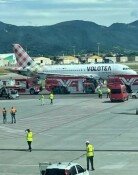Wages in Korea jump fourfold in past 12 years
Wages in Korea jump fourfold in past 12 years
Posted February. 16, 2001 17:26,
Korea is ahead of its main competitors in terms of the pace of wage increases, but lags behind advanced countries in terms of the purchasing power of wage earners. According to the Korea Employers Federation (KEF) Thursday, the wage index for Korean workers stood at 448.9 in 1999, a four-fold increase from 1987, when the standard level was arbitrarily set at 100. During the same period, the wage index rose to 127.4 for Japan, 146.5 for the United States, and 245.5 for Taiwan.
In terms of amount, the average wage of Korean workers was $400 in 1987, much lower than $484 in Taiwan. It was also a mere 18% of the Japanese wage level and 23% of the U.S. level. In 1999, the figure in Korea stood at $1,241, higher than $1,169 in Taiwan and narrowing the gap to 35% of the Japanese level and 49% of the U.S. level.
Looking at the actual purchasing power of Korean wage earners, a worker in Korea could take 2,459 city bus rides with his or her one-month salary (based on the manufacturing industry in 1999), much more than 2,217 rides in Japan and 1,676 in the United States.
In terms of basic taxi fares, a worker in Korea could take a taxi 1,135 times, compared with 605 times in Japan and 1,257 in the United States. These figures indicate that public transportation fees in Korea are relatively low compared to other countries. With his one-month salary, a worker in Korea could buy 492 hamburgers, compared to 1,357 in Japan, and 986 in the United States.
In 1980 when the price of the Chinese noodle dish ¡°Jajangmyon¡± was 874 won, a Korean worker could buy 201.4 dishes with one-month`s pay, a figure that rose 3.3-fold to 672.8 dishes in 2000.
Park Won-Jae parkwj@donga.com




![[단독]김건희 논문 검증단 “이진숙 지명철회-자진사퇴 요구할 것”](https://dimg.donga.com/c/138/175/90/1/wps/NEWS/IMAGE/2025/07/09/131969512.1.jpg)
![[단독]정성호, 의원시절 경기교육청 고문변호사 겸직](https://dimg.donga.com/c/138/175/90/1/wps/NEWS/IMAGE/2025/07/09/131969257.1.jpg)

